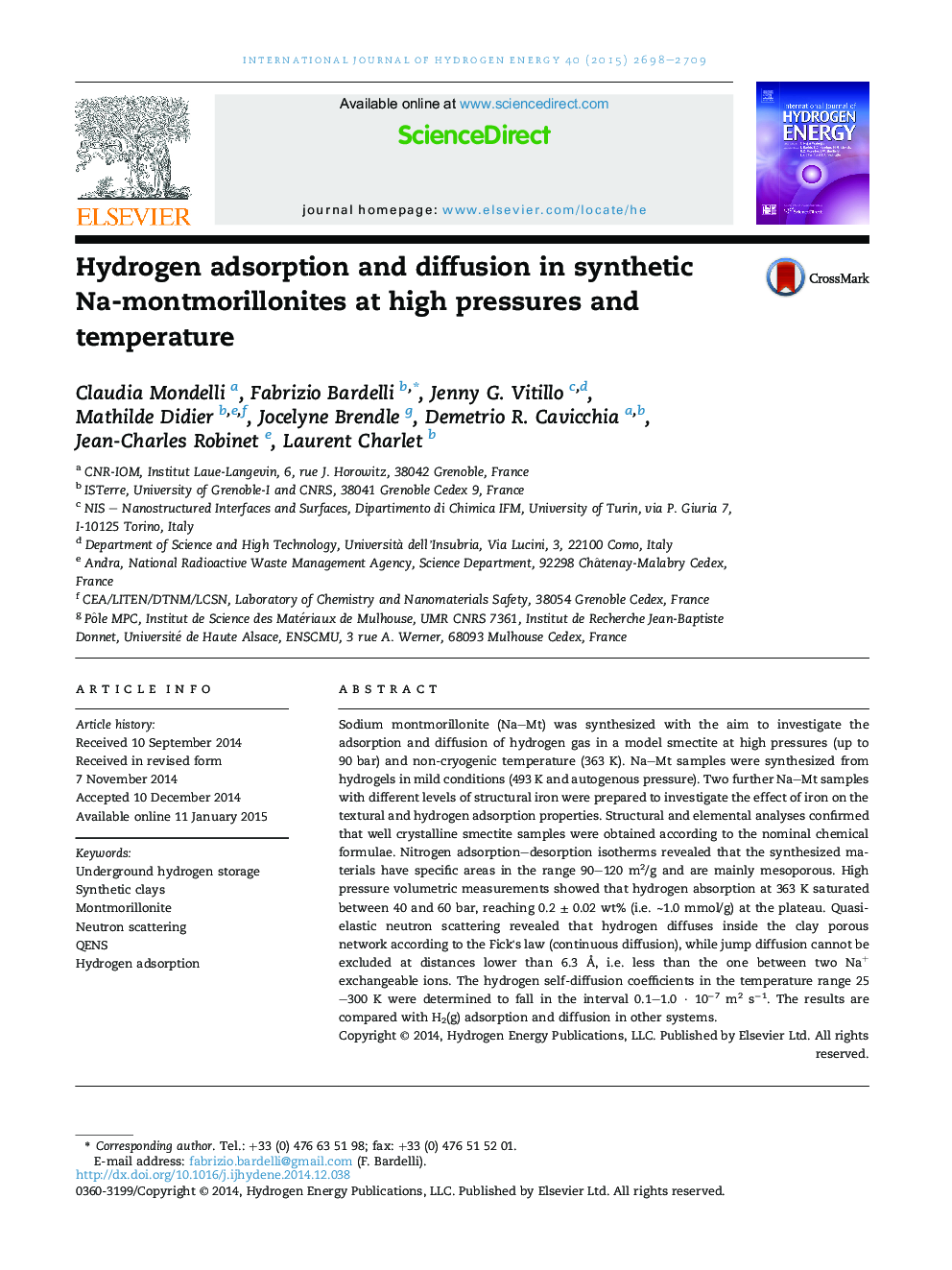| Article ID | Journal | Published Year | Pages | File Type |
|---|---|---|---|---|
| 1270034 | International Journal of Hydrogen Energy | 2015 | 12 Pages |
•We estimated the H2(g) sorption capacity of synthetic Na-montmorillonite samples.•H2 and N2 adsorption isotherms at different temperatures and pressures were compared.•We measured the H2(g) self-diffusion coefficients in the samples at 25–300 K and 40 bar.•We worked at pressures and temperatures of interest for hydrogen storage applications.
Sodium montmorillonite (Na–Mt) was synthesized with the aim to investigate the adsorption and diffusion of hydrogen gas in a model smectite at high pressures (up to 90 bar) and non-cryogenic temperature (363 K). Na–Mt samples were synthesized from hydrogels in mild conditions (493 K and autogenous pressure). Two further Na–Mt samples with different levels of structural iron were prepared to investigate the effect of iron on the textural and hydrogen adsorption properties. Structural and elemental analyses confirmed that well crystalline smectite samples were obtained according to the nominal chemical formulae. Nitrogen adsorption–desorption isotherms revealed that the synthesized materials have specific areas in the range 90–120 m2/g and are mainly mesoporous. High pressure volumetric measurements showed that hydrogen absorption at 363 K saturated between 40 and 60 bar, reaching 0.2 ± 0.02 wt% (i.e. ∼1.0 mmol/g) at the plateau. Quasi-elastic neutron scattering revealed that hydrogen diffuses inside the clay porous network according to the Fick's law (continuous diffusion), while jump diffusion cannot be excluded at distances lower than 6.3 Å, i.e. less than the one between two Na+ exchangeable ions. The hydrogen self-diffusion coefficients in the temperature range 25–300 K were determined to fall in the interval 0.1–1.0 · 10−7 m2 s−1. The results are compared with H2(g) adsorption and diffusion in other systems.
